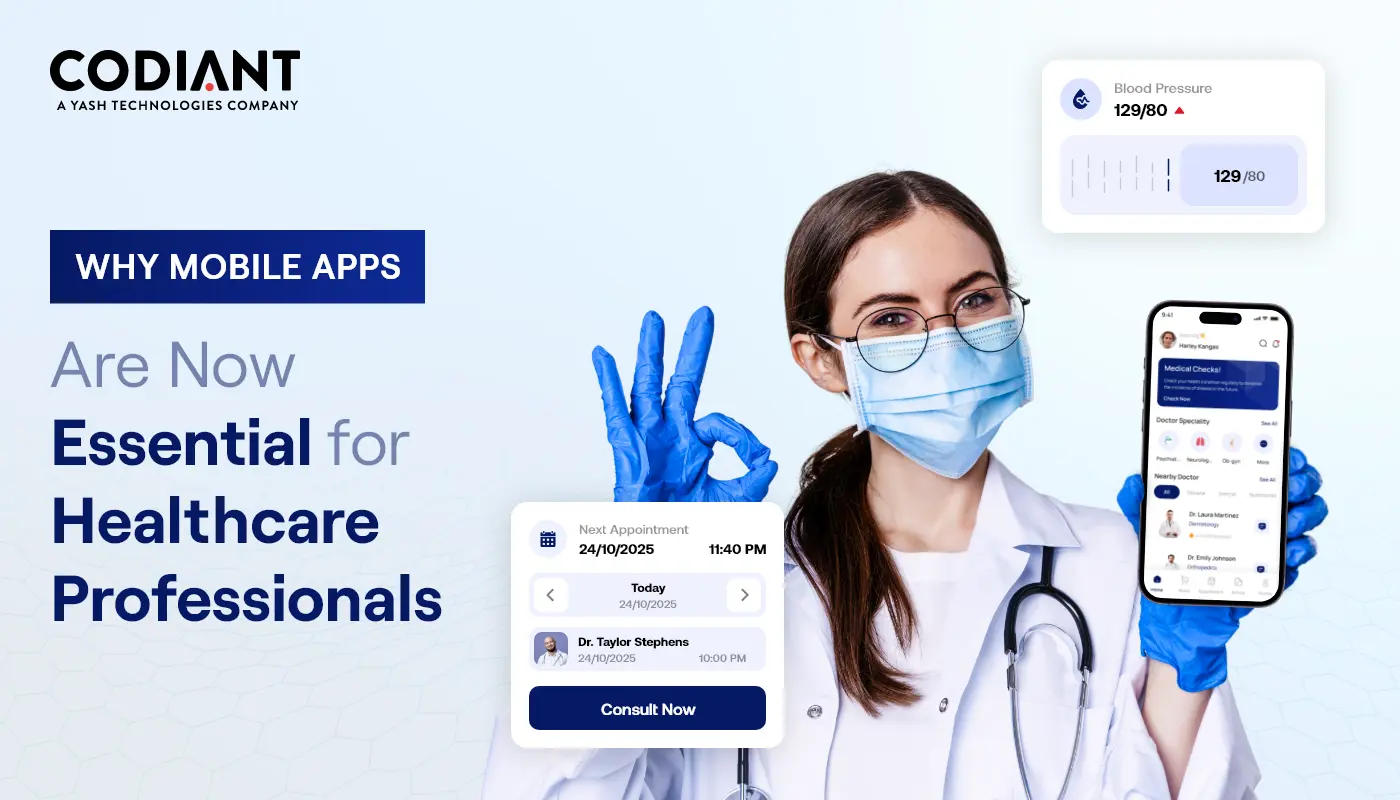Upcoming Software Testing and Quality Assurance Trends 2024
Table of Contents
Subscribe To Our Newsletter

Software testing and quality Assurance services are fundamental to software development services. The software testing should be integrated from the initial phases of software development. This helps in overcoming challenges and bottlenecks that otherwise affect the quality of the product.
Software development companies should integrate quality assurance and testing for products in the developing phase. This will save them from paying the high costs required to fix bugs or errors in the software.
However, QA and testing have witnessed a big shift and moved beyond simply doing manual software testing. Now, QA and software testing services have become more detailed and so, the QA testing companies must focus on modern scenarios and new-age devices.
The new-age devices encompass various AI-enabled products such as bots and wearables. These devices help testers to work along with upcoming quality assurance and testing trends.
Ensure flawless software quality with our Expert QA Services. Let’s connect and raise the bar in Testing and QA standards.
QA VS Testing
Explore the key difference between QA and testing to improve your software development process.
QA Vs Testing |
|||
| S. No. | Aspect | Testing | QA |
| 1 | Focus | Preventing defects | Identifying defects or bugs |
| 2 | Purpose | Ensure adherence to quality principles | Validate functionality, performance, and reliability |
| 3 | Approach | Proactive | Reactive |
| 4 | Activities | Establish processes, standards, and methodologies | Execute predefined test cases |
| 5 | Methods | Process audits, requirements analysis, design reviews, etc. | Automated or manual |
| 6 | Involvement | Begins before the development phase and lasts throughout the process | Throughout software development lifecycle |
| 7 | Goal | Ensure the final product meets quality standards consistently | Ensure software meets specified requirements |
Let’s see the top statistics and current trends in software testing & QA services to understand the impact of these services on businesses in 2023 and beyond.
Top Software Testing & QA Statistics
- Revenue in the Software market is projected to reach US$698.80bn in 2024
- The software testing market is further looking at a projected CAGR growth of 7% as per the report by Global Marketing Insights. This is due to the higher integration of artificial intelligence during the years between 2021 and 2027
- With respect to BFSI applications, the software testing market is expected to cross USD 20.00 Billion by 2032
- With the usage of mobile-based applications, the market size of software testing held a valuation of around USD 45.00 Billion in 2022 and is slated to witness around 5% CAGR from 2023 to 2032
- For data security and product safety purposes, the application testing segment records an estimation of more than USD 50.00 Billion by 2032
As businesses continue to enfold digital transformation, the demand for software testing & QA services is increasing every now and then.
To stay competitive in the market, watch out new trends in software testing and QA services.
What are the key trends in Software Testing and Quality Assurance for 2024?
In 2024, Software Testing and Quality Assurance are evolving with trends like AI-ML enabled testing, Shift-Left Testing, Test Automation at Scale, TestOps & Quality Engineering, Cybersecurity Testing, and Test Automation for Mobile and IoT.
These software testing trends focus on efficiency, early issue detection, security, and adapting to new technologies.
Software Testing & Quality Assurance Trends
Here are the newest testing industry trends that are shaping the future of companies providing testing services.
AI-ML Enabled QA and Testing Services

If you want to know something new in software testing, you must think of AI and ML technologies. AI and ML technologies have marked a notable changeover in software testing and QA services. AI-enabled quality assurance and testing harnesses the power of automation and intelligent algorithms. This helps enhance test coverage, efficiency, and accuracy.
According to Gartner, 40% of large enterprises will use AI-augmented automation to improve productivity by the end of 2023.
- AI-Powered Test Automation: While traditional test automation has been around for a while, AI enhances it by predicting test cases, fixing test scripts, and running tests autonomously. AI analyzes past test data to spot patterns, letting testers focus on critical areas and lessen script maintenance. When combined with QA Automation tools, these capabilities drastically reduce manual intervention
- Intelligent Test Data Management: Test data management is critical for effective testing. AI-driven solutions can generate realistic test data, anonymize sensitive information, and optimize data provisioning. This eases the tasks of software testers to create and manage test environments.
- Predictive Analytics: Predictive analytics leverages artificial intelligence to forecast potential defects and performance bottlenecks. By analyzing historical data during quality assurance testing services, AI can find out areas that are likely to cause issues in the future. This helps enable proactive reduction and risk management.
- Chatbots for Test Execution: AI-powered chatbots can execute test cases, record results, and also, perform exploratory testing. They are great for saving time on repetitive tasks in the software testing industry. This lets software testers concentrate on more creative and challenging testing tasks.
Shift-Left Testing

Shift-left testing is a trend that highlights the integration of testing activities earlier in the software development lifecycle (SDLC). By doing so, organizations can identify and address issues at an earlier stage. This reduces the cost and effort required for bug fixes later in the development process.
- DevOps & Continuous Testing: The adoption of DevOps services has led to a natural alignment with shift-left testing. Continuous testing is a core component of DevOps. In this approach, all testing activities are seamlessly integrated into the CI/CD pipeline. Automated tests need to execute whenever the software tester makes any code changes. Besides, the software test must ensure that they have found all the defects in the software and also, give this feedback to software developers.
- Test-Driven Development (TDD): Test-Driven Development (TDD) is a method where tests are created before writing the actual code. This sets clear software requirements, ensuring stronger, dependable code. TDD prioritizes quality right from the start of development.
- Behavior-Driven Development (BDD): Behavior-Driven Development (BDD) focuses on software behavior from the user’s perspective. It uses easy-to-understand natural language for all team members. This boosts teamwork between developers and testers. Additionally, it takes care that the software product must meet the user’s expectations.
- Early Test Environment Provisioning: To enable shift-left testing, it’s crucial to have test environments available early in the development process. Containerization and cloud-based infrastructure have made it easier to provision test environments on demand. Hence, it allows for more comprehensive testing throughout the SDLC.
Test Automation at Scale

Automating tests has been vital for ensuring software quality for a long time. But, its role continues to evolve with software testing new technologies and tools enabling automation at scale.
- Codeless Test Automation: Codeless test automation tools are gaining popularity because they allow testers with limited programming knowledge to create and execute automated tests. These tools use intuitive graphical interfaces, making test automation more accessible to a broader range of team members.
- Test Orchestration and Management: As the number of automated tests grows, managing and orchestrating them becomes a challenge. Test orchestration tools help schedule, execute, and monitor test runs across different platforms and environments. Also, they integrate with CI/CD pipelines and make sure that automated tests are seamlessly integrated into the development process.
- Cross-Browser and Cross-Platform Testing: With the spread of devices and browsers, cross-browser and cross-platform testing is essential to ensure a consistent user experience. Automation tools that support parallel testing across various configurations are quite commonly used for these types of testing.
- Test Data Automation: Test data management is a critical aspect of test automation. Automated solutions that help in generating, maintaining, and refreshing test data are on the rise. Thus, it reduces the manual effort required for test data setup and maintenance.
TestOps & Quality Engineering
Considering innovations in software testing efficiency, the concept of TestOps and Quality Engineering has gained momentum in the past few years. Now, organizations aim to match QA standards and testing practices with overall business objectives.
- TestOps: TestOps is a cultural and process-oriented approach that emphasizes collaboration between development, testing, and operations teams. It aims to streamline testing processes, automate repetitive tasks, and promote a shared responsibility for quality across the organization.
- Quality Engineering: Quality Engineering goes beyond traditional QA by focusing on the end-to-end quality of the software product. Organizations must think like QA engineers. They must develop quality products and understand that quality product development takes time. So, avoid rushing and shape the whole process for better outcomes. It involves continuous monitoring and improvement of the entire software development process, from requirements to deployment and beyond. Quality engineers work alongside developers to ensure that quality is built into every phase of the SDLC.
- Quality Metrics & Analytics: Quality assurance testing company should rely on quality metrics and analytics to measure and improve software quality. These metrics are good enough to give meaningful insights about the testing efforts, their impact on the business, and the overall quality of the product. Later, quality dashboards and reporting tools help teams make data-driven decisions to improve software quality.

- Test Environments as Code: Treating test environments as code means defining and provisioning test environments using code and infrastructure-as-code (IAC) principles. This approach ensures consistency and repeatability in test environments, reducing the likelihood of environment-related issues.
Cybersecurity Testing
As cyber threats continue to evolve, cybersecurity testing becomes a critical aspect of software testing and QA services. Ensuring the security of software applications is paramount to protect user data and maintain trust.
- Vulnerability Scanning & Penetration Testing: By using the latest testing technologies, automated vulnerability scanners, and manual penetration tests, organizations identify security flaws in software early on. Integrating these tests into CI/CD pipelines helps mitigate security risks and minimize the impact of potential breaches.
- Security Testing Tools: Organizations are increasingly adopting security testing tools such as static and dynamic application security testing (SAST and DAST), to enhance their security posture. These tools analyze code and application behavior to detect vulnerabilities and potential threats.
- Compliance Testing: Regulatory compliance, such as GDPR and HIPAA demands strict security and privacy for software applications. Compliance testing ensures software meets these standards, safeguarding the organization and its users.
- Security Champions: Some organizations appoint security champions within development and testing teams. These champions possess expertise in cybersecurity and can define security best practices, conduct security reviews, and guide teams to address security concerns. Further, this trend promotes a proactive approach to security within the development and testing processes.
Test Automation for Mobile and IoT
The most recent generation of IoT and mobile devices comes with certain challenges for quality assurance testing services.
- IoT Testing: IoT devices have unique testing requirements due to their diverse hardware, communication protocols, and complex ecosystems. IoT testing involves validating device functionality, compatibility, security, and scalability. Test automation for IoT addresses these challenges and ensures the reliability of IoT solutions too.

- Mobile Test Automation: Mobile test automation tools and frameworks are evolving to support a wide range of mobile platforms and devices. Such tools help to do mobile app testing on different OS, screen sizes, and device configurations. This is why, automation tools that facilitate mobile testing across diverse environments are in great demand.

Furthermore, the future trends in software testing and QA are impactful for companies who want to innovate themselves in this dynamic environment.
Whats New in Software Testing?
Explore what’s new in software testing now and revolutionize your testing strategies. Here are the latest insights. Below are the latest ones-

- Digital Transformation
More organizations are embracing digital transformation, such as DevOps, which prompts them to rethink QA in a digital context. This shift fosters team cohesion, enhancing speed and efficiency. However, a strong QA strategy is essential for continuous development and delivery. Thus, DevOps is converging with QA, giving rise to a new framework called QAOps. QAOps ensures software quality by applying a DevOps approach. - Artificial Intelligence
AI adoption in QA falls short of expectations. AI, driven by machine learning, aims to enhance testing. This shift will spawn roles like data scientists and AI quality experts. Demand rises for testers proficient in AI-based testing, reshaping QA roles. Innovating AI integration while preserving creativity is crucial. Recent advancements offer AI opportunities to generate test data and improve reports. - SDET
Software Development Engineers in Test (SDETs) combine functional and automation testing to enhance quality and reduce costs. SDETs are testers skilled in both functional and automation testing, using coding to drive organizational success. They spot defects early, enhance white box testing, and boost quality while saving costs through automation. - Test Environment
QA teams need independent domain management skills. Test environments should suit QA’s separate testing from development. Diverse test strategies prevent delays from incompatible environments. The availability of suitable environments and clear release notes are vital for effective communication and expectation setting. Unit test results and defect reports are crucial for success. - Testing Center of Excellence (TCoE)
The business world is pressured to establish a TCoE due to budget constraints and diverse testing models. Underperforming tests and underutilized resources accentuate this need. A TCoE centralizes QA, ensuring consistent processes, metrics, and delivery for enhanced customer satisfaction. Success involves securing sponsorship, aligning with project teams, and implementing clear processes and communication channels. A thorough project plan with defined methods and responsibilities ensures every team member understands goals and roles, guided by the target operating model.
To Sum Up!
Staying up-to-date on the latest software testing and quality assurance trends is important for a quality assurance testing company. It helps deliver high-quality software products that cater to the entire needs of the software development and testing paradigm, especially for businesses seeking AI solutions in Saudi Arabia.
By following software testing new technologies and QA trends, businesses can enhance software quality, accelerate development cycles, and ultimately deliver pleasing user experiences. Leading software development companies evaluate new trends in software testing and then determine how they can integrate these trends into their quality assurance and testing practices and processes.
Featured Blogs
Read our thoughts and insights on the latest tech and business trends
Top Reasons Why Healthcare Providers Need Mobile Apps Today
- October 27, 2025
- Healthcare
If you’ve been to a clinic lately, you might have noticed something new-paper forms are almost gone and screens are everywhere. From booking doctor visits online to checking your recovery updates on your phone mobile... Read more
Which is Better for Your Business in 2025- Chatbots or Conversational AI?
- October 22, 2025
- Artificial Intelligence
In a Nutshell: Chatbots = Simple & Fast- Great for FAQs, appointment bookings & routine customer support. Conversational AI = Smart & Scalable- Uses NLP and machine learning to understand context, personalize replies & handle... Read more
Why Hiring Full-Stack Developers Makes More Sense for Complex Projects
- October 17, 2025
- Staff Augmentation
Let’s start with the obvious- software projects are messy. They never roll out like those neat diagrams in pitch decks where every arrow points forward and nothing breaks. Complex projects - think SaaS platforms, enterprise... Read more




